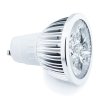Hello friends.
As Some of you may know I started a thread about LEDs, two or three days ago. When I was searching I noticed that the LED's which are used in home aplications and supplied by 110 or 220V use a circuit inside them, Can you guys plz let me know why that circuit is needed (except of lowering the mains voltage of the LED's). I took one a part and noticed that there is a chip and a coil/choke plus other components
Thanks.
As Some of you may know I started a thread about LEDs, two or three days ago. When I was searching I noticed that the LED's which are used in home aplications and supplied by 110 or 220V use a circuit inside them, Can you guys plz let me know why that circuit is needed (except of lowering the mains voltage of the LED's). I took one a part and noticed that there is a chip and a coil/choke plus other components
Thanks.


